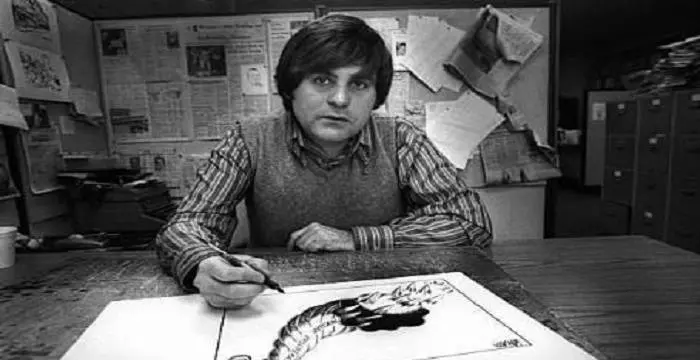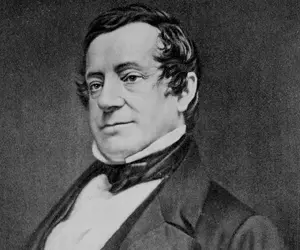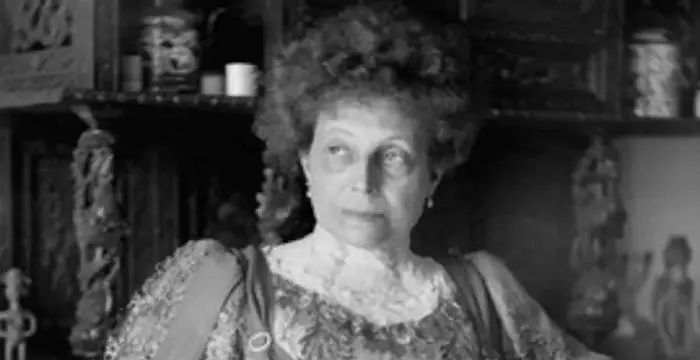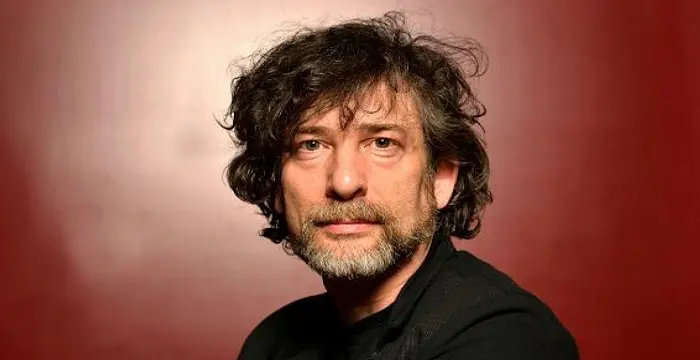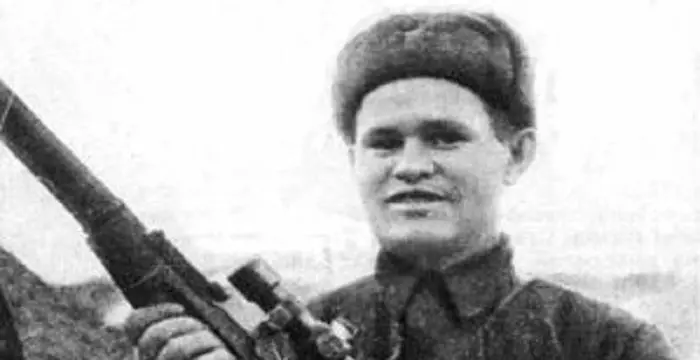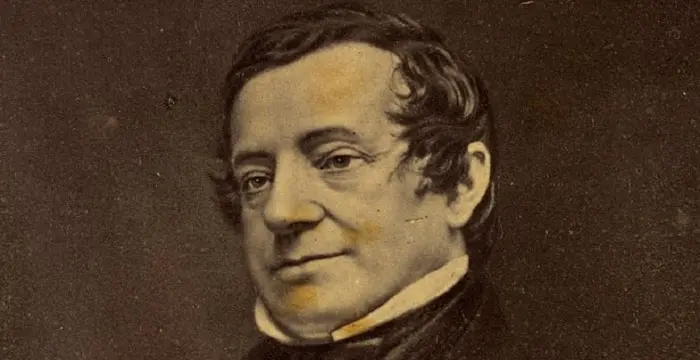
Washington Irving - Author, Facts and Life
Washington Irving's Personal Details
Washington Irving was America's first genuine internationally best-selling author
| Information | Detail |
|---|---|
| Birthday | April 3, 1783 |
| Died on | November 28, 1859 |
| Nationality | American |
| Famous | Historians, Short Story Writers, Essayists, Biographers, Miscellaneous, Diplomats, Author |
| Siblings | Ann Irving, Catherine Irving, Ebenezer Irving, John Treat Irving, Peter Irving, Sarah Irving, William Irving |
| Discoveries / Inventions |
|
| Birth Place | New York City, New York |
| Gender | Male |
| Father | William Irving Sr. |
| Mother | Sarah Irving |
| Sun Sign | Aries |
| Born in | New York City, New York |
| Famous as | Author, Historian, Diplomat |
| Died at Age | 76 |
// Famous Author
Joyce Meyer
Joyce Meyer is a Christian author and speaker. This biography provides detailed information about her childhood, life, achievements, works & timeline
Suze Orman
Suze Orman is an American television host, financial advisor, author and motivational speaker, famous for her ‘The Suze Orman Show’ on CNBC. This biography profiles her childhood, life, career, works, achievements and timeline.
Robert Graysmith
Robert Graysmith is an author best identified for his works on the ‘Zodiac Killer case’. Check out this biography to know about his childhood, family life, achievements and fun facts about him.
Washington Irving's photo
Who is Washington Irving?
If you have been in love with the character of Rip Van Winkle since you were an adolescent, you need to thank Washington Irving time and again for helping you escape into the world of fantasy, leaving aside the realities of life. The creator of the character, Irving was an American author and essayist of the early 19th century who shot to fame with the famous short story, ‘The Legend of Sleepy Hollow’. Irving’s got interested in writing at an early age. He started off by writing a series of observational letters to the Morning Chronicle. It was when he relocated to England that he penned his debut book, ‘The Sketch Book of Geoffrey Crayon, Gent’. The book brought him international fame and reputation. It was superlative success of his debut venture that led him to continue his writing spree. Interestingly, all his publications were a major hit and contributed to his success. Other than short stories and essays, he also penned biographies of well-known and eminent world personalities like Oliver Goldsmith and George Washington, the latter of which extended to five volumes. In his lifetime, he also served as US Ambassador to Spain from 1842 to 1846. All his life, he worked for making writing a legitimate profession. He even worked to bring up strong laws to protect the writers from copyright problems.
// Famous Diplomats
Gertrude Bell
Gertrude Bell was an English writer and diplomat, who was highly influential in helping the British Empire exert its dominance in the Middle East. Check out this biography to know about her childhood, family life, achievements and fun facts about her
Stephen Lewis
Stephen Lewis is a Canadian politician, broadcaster, diplomat and professor. This biography profiles his childhood, career, works, life, achievements and timeline.
Niccolò Machiavelli
Niccolo Machiavelli was an Italian politician, historian and philosopher who is widely known as a founder of modern political science.
Childhood & Early Life
Washington Irving was born on April 3, 1783 to William Irving Sr and Sarah in New York City. He had eleven siblings out of which only eight survived to adulthood.
He met his namesake, George Washington, at a very young age and captured the moment in a small painting which is present till date.
Much against the family tradition of becoming merchants, young Irving had an inherent interest in literature and pursued the same. Interestingly, his brothers supported him in his literary pursuits, monetarily helping him chase his passion.
Academically, he wasn’t a dedicated student and instead preferred to attend theatre than sit in class. It was during the outbreak of the 1798 yellow fever that he left Manhattan for health reasons.
Career
In 1802, he started submitting letters to the New York Morning Chronicle under the pen name, Jonathan Oldstyle. This was the modest beginning of his legendary literary career.
From 1804 to 1806, he undertook a trip to Europe learning the social and conversational skills that helped him at the later stages of life. In between, he was also persuaded to take up painting as a profession which did not materialize.
Upon returning from Europe, he took up law classes under Judge Josiah Ogden Hoffman, his legal mentor. In 1806, he just about passed the bar examination.
In 1807, with the help of his brother and friend, he started a literary magazine, Salmagundi. The content of the magazine included critical comments on New York’s culture and politics.
The success of Salmagundi built his reputation outside New York. It was in 1809 that he completed his first major book titled, ‘A History of New-York from the Beginning of the World to the End of the Dutch Dynasty’. The book met with immediate critical and popular success.
Post the impressive success in his debut venture, he acquired the position of an editor at the Analectic Magazine. In the new capacity, he did some outstanding work, the most remarkable amongst which was reprinting Francis Scott Key's poem that would go on to become the national anthem of the United States.
He was opposed to the War of 1812 but when the British attacked Washington D. C in 1814, he changed his mind enlisted. In 1814, he was drafted as the staff of Daniel Tompkins, governor of New York and commander of the New York State Militia. The devastating and ruinous nature of the war led him to leave for England in 1815.
Despite his attempts to reinstate the family’s financial position, the family was declared bankrupt. It was during this time that he first created the legendary character of ‘Rip Van Winkle’.
In 1819, he sent his brother in New York a set of short piece of prose titled, ‘The Sketch Book of Geoffrey Crayon, Gent’ to get it published. The first instalment was received with much praise and success leading to the publication of the equally successful seven follow-ups.
The soaring literary career gave him a star status in Europe. To prevent piracy and illegal reprinting of his works, he appointed John Murray as his preferred publisher.
Together with Murray, he was eager to replicate the success of his ‘Sketch Book’. As such, he spent much of 1821 exploring Europe for a new material. Moving past various hurdles, he finally submitted his work in 1822.
In June 1822, ‘The Bracebridge Hall’ was published. The book was similar to his previous venture, narrating about fifty short stories that are loosely connected to each other. It met with much success further cementing his reputation as an author.
In 1823, he collaborated with playwright John Howard Payne working on translating French plays in English. However, the same did not meet with much success. The following year, he published a collection of essays titled, ‘Tales of a Traveller’, which though commercially moderately successful was critically panned.
The bad reception of the book caused him to retreat to Paris where he thought of new ideas for projects that somehow never came to frame. It was in 1826 that he received a letter from Alexander Hill Everett in which he sent him an invitation to move to Madrid.
At Madrid, he was exposed to a number of manuscripts that dealt with the Spanish conquest of America. He gained full access to the American library of Spanish history and began working on the new-found material.
His first piece of work from his new material was ‘A History of the Life and Voyages of Christopher Columbus’, which was published in January 1828. The book reigned at the book shelves and was extremely popular in the US and Europe. It had 175 editions and was the first book which he published in his own name.
The great success of this book led him to publish ‘Chronicle of the Conquest of Granada’ the following year. Furthermore, he published his third venture in Spanish books, ‘Voyages and Discoveries of the Companions of Columbus’. Interestingly, all his three books ad a mix of both history and fiction.
In 1829, he left for England after being appointed as the Secretary to the American Legation in London. He took the role of aide-de-camp. In the new capacity, he tried to strike trade negotiation between the United States and the British West Indies.
He did not continue in the new position for long and resigned from his duties to concentrate on his writing. He started completing his unfinished work of 1829 titled, ‘Tales of the Alhambra’ which was published in the US and England in 1832.
In 1832, he returned to New York after seventeen year of hiatus. He toured some of the cities of US and came out with his next work, titled, ‘A Tour on the Praries’. The book met with grand success.
In 1836, he came up with a biographical account of Jacob Astor’s fur trading company, ‘Astoria’. The following year, he released the book, ‘The Adventures of Captain Bonneville’.
He was offered to write essays and short stories for The Knickerbocker magazine. Furthermore, he became an advisor to the budding authors who approached him for advice and endorsements.
In 1842, he was appointed as the Minister to Spain by President John Tyler. In the new capacity, he found himself in the middle of political mayhem which Spain was experiencing. No sooner, he was exhausted by the turn of events and the political chaos.
His duties in Spain stretched until 1846 after which he returned to America and began working on his next literary piece ‘Author's Revised Edition’, revising older works for George Palmer Putnam.
His later works included writing on the works of Islamic prophet Muhammad, biography of Oliver Goldsmith and George Washington. For the latter, he indulged in much research work and published five volumes of the biography.
Awards & Achievements
In 1830, he was awarded a medal by the Royal Society of Literature. The following year, he received an honorary doctorate of civil law from Oxford
Personal Life & Legacy
He did not go into the wedlock in his life, but was romantically attracted to Emily, daughter of the royal family of Dresden, Fosters, while he was in Germany. Following her refusal to his offer of marriage, he relocated from Germany.
He breathed his last on November 28, 1859 due to heart attack. He was buried at Sleepy Hollow cemetery two days later.
To honor his literary contribution, several schools, parks, memorials, the city of Irving in Texas, a community area at Irving Park and Irving Trust Corporation has been named after him. He also has to his credit Washington Irving literary society, Indianapolis, Indiana neighborhood of Irvington and the town of Knickerbocker, Texas.
His home Sunnyside has become a historic site and is open to public for tours.
He was pictured on the 1 cent US postage stamp in the Famous American/Authors series, issued on January 29, 1940.
Trivia
This American author and creator of the legendary character of Rip Van Winkle is popularly known to the world as the first American Man of Letters.
// Famous Short Story Writers
Charles Bukowski
Charles Bukowski was a German-born American novelist, short story writer and poet. With this biography, learn in details about his childhood, life, works, career and timeline
Ruskin Bond
Ruskin Bond is an award winning Indian author of British descent. This biography of Ruskin Bond provides detailed information about his childhood, life, achievements, works & timeline.
Neil Gaiman
Neil Gaiman is an English writer of novels, short stories, children’s books and other literature. This biography provides detailed information about his childhood, life, achievements, works & timeline.
Washington Irving biography timelines
- // 3rd Apr 1783Washington Irving was born on April 3, 1783 to William Irving Sr and Sarah in New York City. He had eleven siblings out of which only eight survived to adulthood.
- // 1798Academically, he wasn’t a dedicated student and instead preferred to attend theatre than sit in class. It was during the outbreak of the 1798 yellow fever that he left Manhattan for health reasons.
- // 1802In 1802, he started submitting letters to the New York Morning Chronicle under the pen name, Jonathan Oldstyle. This was the modest beginning of his legendary literary career.
- // 1804 To 1806From 1804 to 1806, he undertook a trip to Europe learning the social and conversational skills that helped him at the later stages of life. In between, he was also persuaded to take up painting as a profession which did not materialize.
- // 1806Upon returning from Europe, he took up law classes under Judge Josiah Ogden Hoffman, his legal mentor. In 1806, he just about passed the bar examination.
- // 1807In 1807, with the help of his brother and friend, he started a literary magazine, Salmagundi. The content of the magazine included critical comments on New York’s culture and politics.
- // 1809The success of Salmagundi built his reputation outside New York. It was in 1809 that he completed his first major book titled, ‘A History of New-York from the Beginning of the World to the End of the Dutch Dynasty’. The book met with immediate critical and popular success.
- // 1819In 1819, he sent his brother in New York a set of short piece of prose titled, ‘The Sketch Book of Geoffrey Crayon, Gent’ to get it published. The first instalment was received with much praise and success leading to the publication of the equally successful seven follow-ups.
- // 1821 To 1822Together with Murray, he was eager to replicate the success of his ‘Sketch Book’. As such, he spent much of 1821 exploring Europe for a new material. Moving past various hurdles, he finally submitted his work in 1822.
- // Jun 1822In June 1822, ‘The Bracebridge Hall’ was published. The book was similar to his previous venture, narrating about fifty short stories that are loosely connected to each other. It met with much success further cementing his reputation as an author.
- // 1823In 1823, he collaborated with playwright John Howard Payne working on translating French plays in English. However, the same did not meet with much success. The following year, he published a collection of essays titled, ‘Tales of a Traveller’, which though commercially moderately successful was critically panned.
- // 1826The bad reception of the book caused him to retreat to Paris where he thought of new ideas for projects that somehow never came to frame. It was in 1826 that he received a letter from Alexander Hill Everett in which he sent him an invitation to move to Madrid.
- // Jan 1828His first piece of work from his new material was ‘A History of the Life and Voyages of Christopher Columbus’, which was published in January 1828. The book reigned at the book shelves and was extremely popular in the US and Europe. It had 175 editions and was the first book which he published in his own name.
- // 1829In 1829, he left for England after being appointed as the Secretary to the American Legation in London. He took the role of aide-de-camp. In the new capacity, he tried to strike trade negotiation between the United States and the British West Indies.
- // 1829 To 1832He did not continue in the new position for long and resigned from his duties to concentrate on his writing. He started completing his unfinished work of 1829 titled, ‘Tales of the Alhambra’ which was published in the US and England in 1832.
- // 1830In 1830, he was awarded a medal by the Royal Society of Literature. The following year, he received an honorary doctorate of civil law from Oxford
- // 1832In 1832, he returned to New York after seventeen year of hiatus. He toured some of the cities of US and came out with his next work, titled, ‘A Tour on the Praries’. The book met with grand success.
- // 1836In 1836, he came up with a biographical account of Jacob Astor’s fur trading company, ‘Astoria’. The following year, he released the book, ‘The Adventures of Captain Bonneville’.
- // 1842In 1842, he was appointed as the Minister to Spain by President John Tyler. In the new capacity, he found himself in the middle of political mayhem which Spain was experiencing. No sooner, he was exhausted by the turn of events and the political chaos.
- // 1846His duties in Spain stretched until 1846 after which he returned to America and began working on his next literary piece ‘Author's Revised Edition’, revising older works for George Palmer Putnam.
- // 28th Nov 1859He breathed his last on November 28, 1859 due to heart attack. He was buried at Sleepy Hollow cemetery two days later.
- // 29th Jan 1940He was pictured on the 1 cent US postage stamp in the Famous American/Authors series, issued on January 29, 1940.
// Famous Miscellaneous
Jason Simpson
Jason Simpson is the son of former NFL running back, broadcaster and actor O. J. Simpson. Check out this biography to know about his childhood, family, life, and little known facts about him.
Melissa Brim
Melissa Brim is the ex-girlfriend of former professional boxer Floyd Mayweather Jr. Check out this biography to know about her birthday, childhood, family life, achievements and fun facts about her.
Joyce Meyer
Joyce Meyer is a Christian author and speaker. This biography provides detailed information about her childhood, life, achievements, works & timeline
Galina Becker
Galina Becker is a former athlete and fitness model from America. Check out this biography to know about her birthday, childhood, family life, achievements and fun facts about her.
Jacelyn Reeves
Jacelyn Reeves is a former flight attendant who once had a fling with Clint Eastwood. Check out this biography to know about her birthday, childhood, family life, achievements and fun facts about her.
Vasily Zaytsev
Vasily Zatysev was a Russian sniper who served during the World War II. Check out this biography to know about his childhood, family life, achievements and fun facts about him.
Washington Irving's FAQ
What is Washington Irving birthday?
Washington Irving was born at 1783-04-03
When was Washington Irving died?
Washington Irving was died at 1859-11-28
Where was Washington Irving died?
Washington Irving was died in Sunnyside, Tarrytown, New York
Which age was Washington Irving died?
Washington Irving was died at age 76
Where is Washington Irving's birth place?
Washington Irving was born in New York City, New York
What is Washington Irving nationalities?
Washington Irving's nationalities is American
Who is Washington Irving siblings?
Washington Irving's siblings is Ann Irving, Catherine Irving, Ebenezer Irving, John Treat Irving, Peter Irving, Sarah Irving, William Irving
What is Washington Irving's inventions/discoveries?
Almighty Dollar was invented (or discovered) by Washington Irving
Who is Washington Irving's father?
Washington Irving's father is William Irving Sr.
Who is Washington Irving's mother?
Washington Irving's mother is Sarah Irving
What is Washington Irving's sun sign?
Washington Irving is Aries
How famous is Washington Irving?
Washington Irving is famouse as Author, Historian, Diplomat


